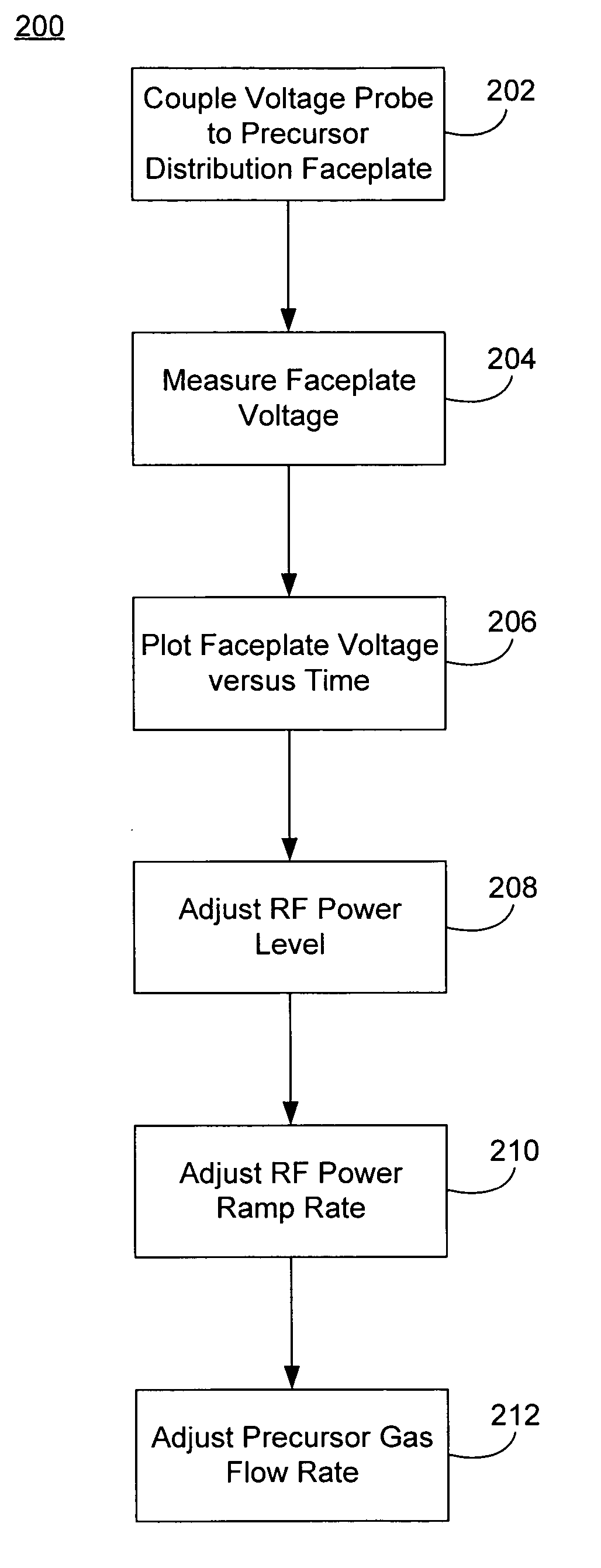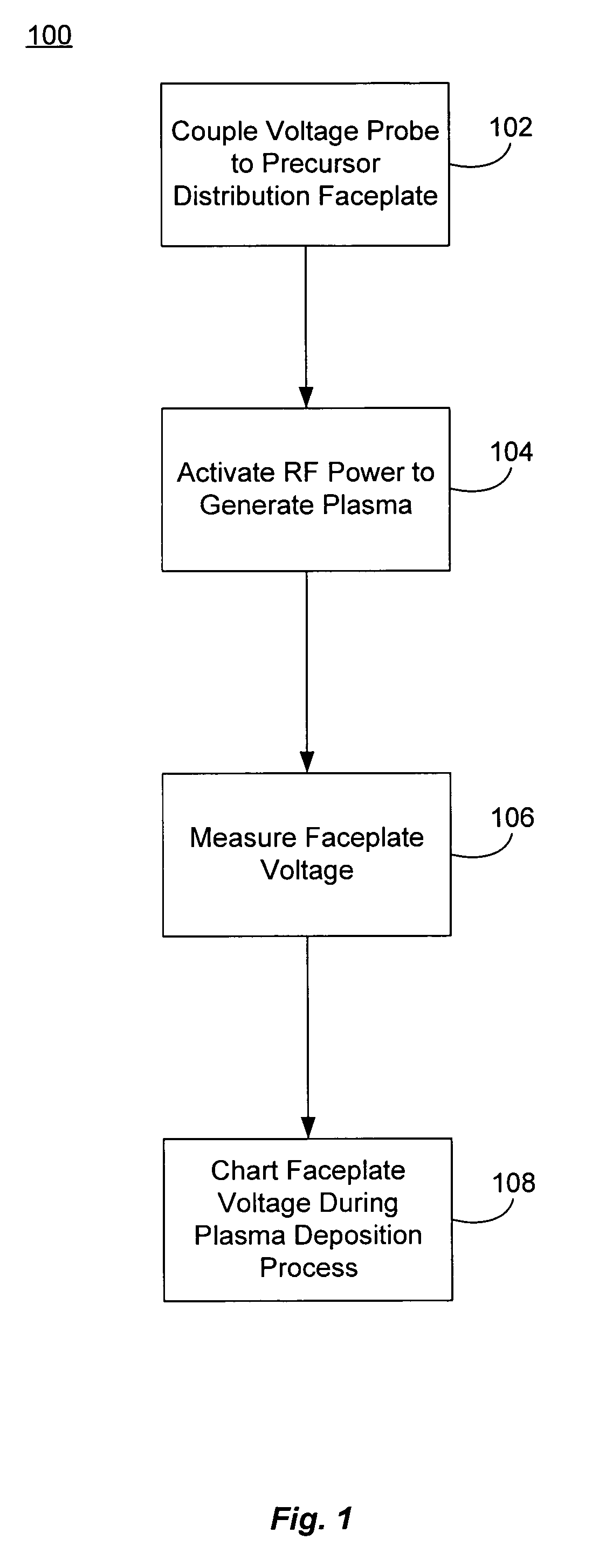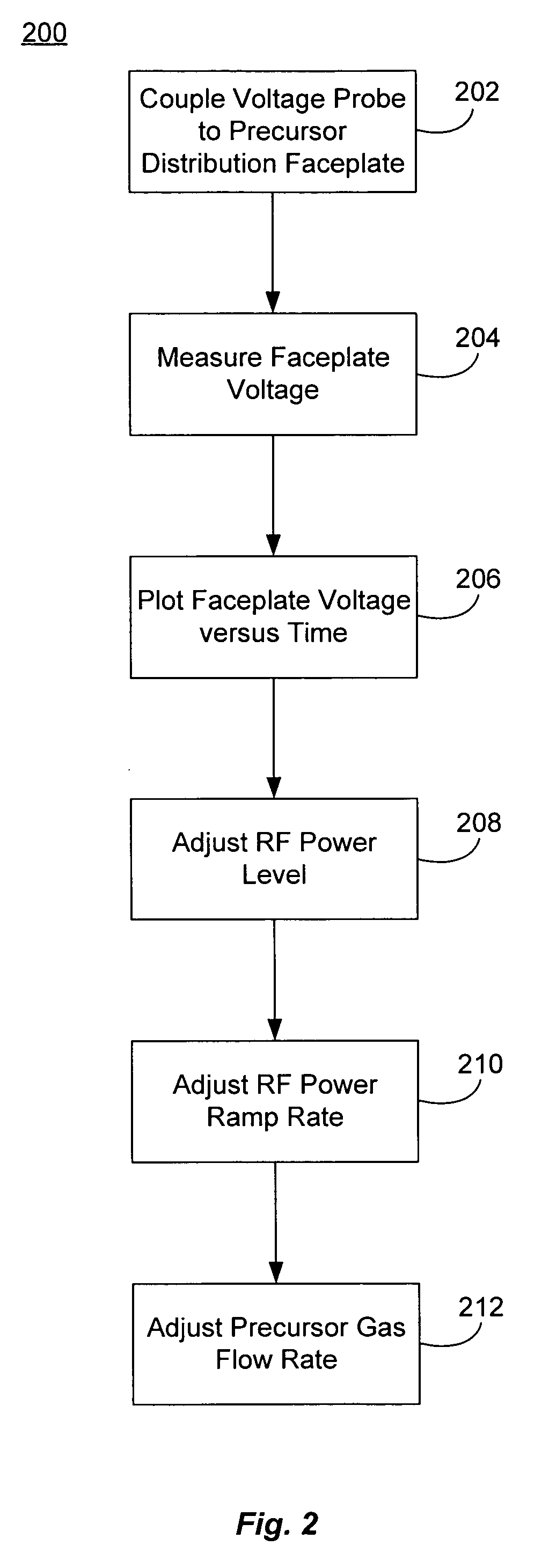Non-intrusive plasma monitoring system for arc detection and prevention for blanket CVD films
a plasma monitoring system and blanket technology, applied in the field of blanket cvd arc detection and prevention, can solve the problems of reducing the yield of working semiconductor devices fabricated on the wafer, reducing the temperature of such cvd processes compared to thermal cvd processes, and the current methods of diagnosing arcing probems in pecvd processing chambers have significant limitations, so as to reduce arcing
- Summary
- Abstract
- Description
- Claims
- Application Information
AI Technical Summary
Benefits of technology
Problems solved by technology
Method used
Image
Examples
example substrate processing
[0031] One suitable substrate processing system in which the method of the present invention can be carried out is shown in FIGS. 3A and 3B, which are vertical, cross-sectional views of a CVD system 10, having a vacuum or processing chamber 15 that includes a chamber wall 15a and a chamber lid assembly 15b. The chamber wall 15a and chamber lid assembly 15b are shown in exploded, perspective views in FIGS. 3C and 3D.
[0032] The CVD system 10 contains a gas distribution fold 11 for dispersing process gases to a substrate (not shown) that rests on a heated pedestal 12 centered within the process chamber 15. During processing, the substrate (e.g., a semiconductor wafer) is positioned on a flat (or slightly convex) surface 12a of the pedestal 12. The pedestal 12 can be moved controllably between a lower loading / off-loading position (depicted in FIG. 3A) and an upper processing position (indicated by dashed line 14 in FIG. 3A and shown in FIG. 3B), which is closely adjacent to the m...
example 1
Arcing During Deposition of FSG Film
[0047] In these examples, fluorine-doped-silicate (FSG) layers (generally having a 8 μm thickness) were deposited on a 300 mm silicon-on-insulator (SOI) substrate wafers in PECVD processes. The PECVD processing chamber used for the depositions was a Producer™ SE chamber made by Applied Materials, Inc. of Santa Clara, Calif. Plasma was generated and deposited on the substrate wafers using a dual-frequency RF power source that supplied high-frequency (i.e., 13.56 MHz) RF power and low-frequency (i.e., 350 kHz) RF power to the processing chamber. Table 1 shows additional processing details for various phases of a standard deposition run in the chamber:
TABLE 1Baseline FSG Layer Deposition Run with PECVD Producer ChamberProcessTOESInitiationDepositionTerminationExhaustConditionOnPhasePhasePhasePhaseMax Time101-282210(sec)Temp (° C.)400400400400400Pressure (Torr)66660Heater Space285285285285285(mils)RF Time (sec)018220HF RF Power01250160016000(Watts...
example 2
Arcing During Deposition of Integrated USG-FGS Film
[0053] In this example, an integrated undoped silicate glass (USG) and fluorine-doped-silicate (FSG) film was deposited on a 300 mm silicon-on-insulator (SOI) substrate wafer in a PECVD process. The PECVD processing chamber used for the deposition was a Producer™ SE chamber made by Applied Materials, Inc. of Santa Clara, Calif. Plasma was generated and deposited on the substrate wafer using a dual-frequency RF power source that supplied high-frequency (i.e., 13.56 MHz) RF power and low-frequency (i.e., 350 kHz) RF power to the processing chamber. The deposition started with the depositing of the USG material on the substrate wafer, followed by a transition to the deposition of the FSG material.
[0054] In a baseline process example, the transition from USG to FSG depositions was discontinuous with the USG process gases and RF power being terminated before the FSG process gases and RF power is initiated. FIG. 6 shows a plot of the D...
PUM
| Property | Measurement | Unit |
|---|---|---|
| Fraction | aaaaa | aaaaa |
| Frequency | aaaaa | aaaaa |
| Power | aaaaa | aaaaa |
Abstract
Description
Claims
Application Information
 Login to View More
Login to View More - R&D
- Intellectual Property
- Life Sciences
- Materials
- Tech Scout
- Unparalleled Data Quality
- Higher Quality Content
- 60% Fewer Hallucinations
Browse by: Latest US Patents, China's latest patents, Technical Efficacy Thesaurus, Application Domain, Technology Topic, Popular Technical Reports.
© 2025 PatSnap. All rights reserved.Legal|Privacy policy|Modern Slavery Act Transparency Statement|Sitemap|About US| Contact US: help@patsnap.com



